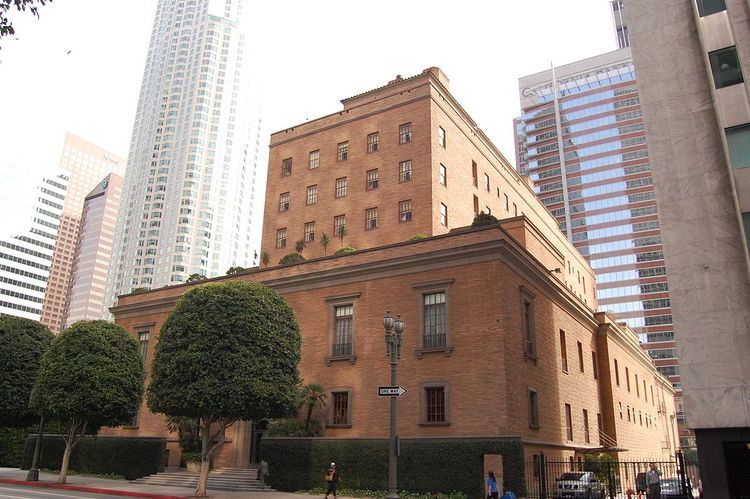Built 1929-30 LAHCM # 43 Phone +1 213-622-1391 | NRHP Reference # 10000425 Designated LAHCM November 2, 1966 Added to NRHP 6 July 2010 | |
 | ||
Area less than 1 acre (0.40 ha) Address 538 S Flower St, Los Angeles, CA 90071, USA Architectural style Renaissance Revival architecture | ||
The crossfit games california club teens masters 50 60
The California Club is a private social club established in 1888 in downtown Los Angeles, the second-oldest such club in Southern California. Its building was erected in 1929 and 1930 and was listed on the National Register of Historic Places in 2010.
Contents
- The crossfit games california club teens masters 50 60
- California club 4x4 in action dottv gr trailer
- History
- Present clubhouse
- References
California club 4x4 in action dottv gr trailer
History
The California Club was incorporated on December 24, 1888. The first organizational meeting was held September 24, 1887, "in Justice Austin's courtroom," with N.C. Coleman as chairman and H.T. DeWilson as secretary.
The constitution and bylaws of the Union Social Club, of San Francisco, was reported and accepted without any change by the body of gentlemen assembled. There was considerable discussion on the . . . name of the club, and . . . it was decided to call it the California Club, of Los Angeles. The section in the bylaws granting army and navy officers all the privileges of members upon half-rate caused considerable feeling among the members. Four votes were taken on the question, and at last it was decided to allow the bylaws to read as they have for twenty-five years in the Union Club.
The club's first location was in the second-floor rooms over the Tally-Ho Stables on the northwest corner of First and Fort (Broadway) streets, where the Los Angeles County Law Library now stands. It moved to the Wilcox Building on the southeast corner of Second and Spring streets in 1895, occupying the two top floors, the fourth and fifth. The building was distinguished as the first in Los Angeles to have two elevators — one for the public and the other for members. The men's dining room, reading room, bar and lounge were on the top floor. On the floor below was the ladies' dining room.
The club remained at the Wilcox Building for ten years. Increased membership impelled the club to seek a new location in the southward and westward direction of the expansion of the city. In 1904 the club's headquarters were moved to a new five-story building with a basement and a roof garden on the northwest corner of Fifth and Hill streets.
In a vote taken in June 1987, 90 percent of the voting members favored admitting women. Since that time, the Club has maintained a non-discriminatory policy for admission to membership.
Among other features, the Club is noted for its architecture, furnishings, fine cuisine, extraordinary wine list and gracious service.
Present clubhouse
In the late 1920s, purchase of land at 538 South Flower Street was negotiated, and in 1929 the present structure was begun. Construction on the current clubhouse at 538 South Flower Street, Los Angeles, California [3], began in late 1928 and was formally completed on August 25, 1930. The building was designed by Robert D. Farquhar, an architect trained at the Ecole Nationale des Beaux Arts in Paris. The American Institute of Architects awarded Farquhar its Distinguished Honor Award for the design of the California Club building.
According to the National Park Service:
The structure is considered one of the most important buildings of the architect Robert D. Farquhar. Built in 1930, The Italian Renaissance Revival style building, with its setbacks and tower, was among the largest buildings in the immediate area when the site was chosen. Elements like the private forecourt, which partially shields the front entrance and first floor, provides the club with a sense of privacy and understated design.
The building was listed on the U.S. National Register of Historic Places on July 6, 2010. The listing was featured in the National Park Service's weekly list of July 16, 2010.
In addition to fine antiques and handcrafted furniture, the clubhouse is decorated with a collection of Western-themed, plein air paintings by such American landscape painters as J. Bond Francisco, Elmer Wachtel, Franz A. Bischoff, George Kennedy Brandriff, William Wendt and Paul Lauritz.
